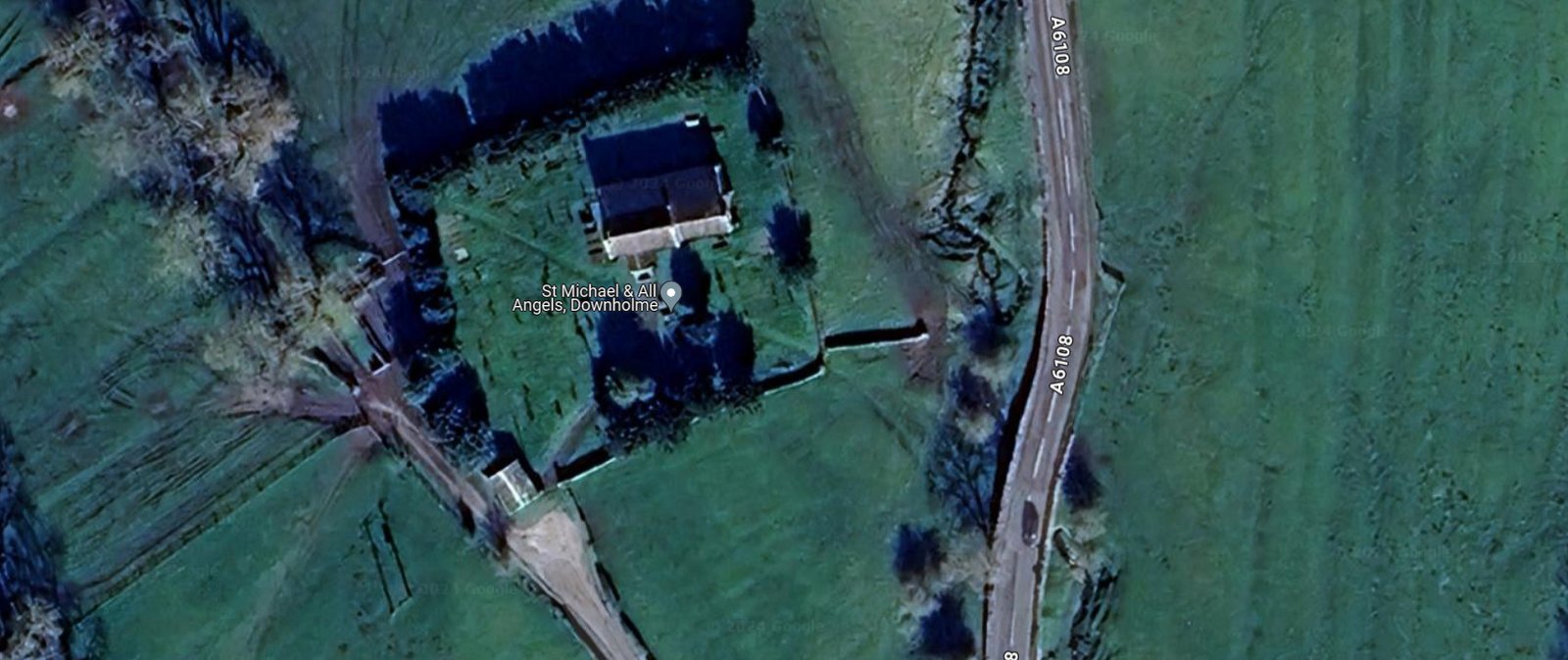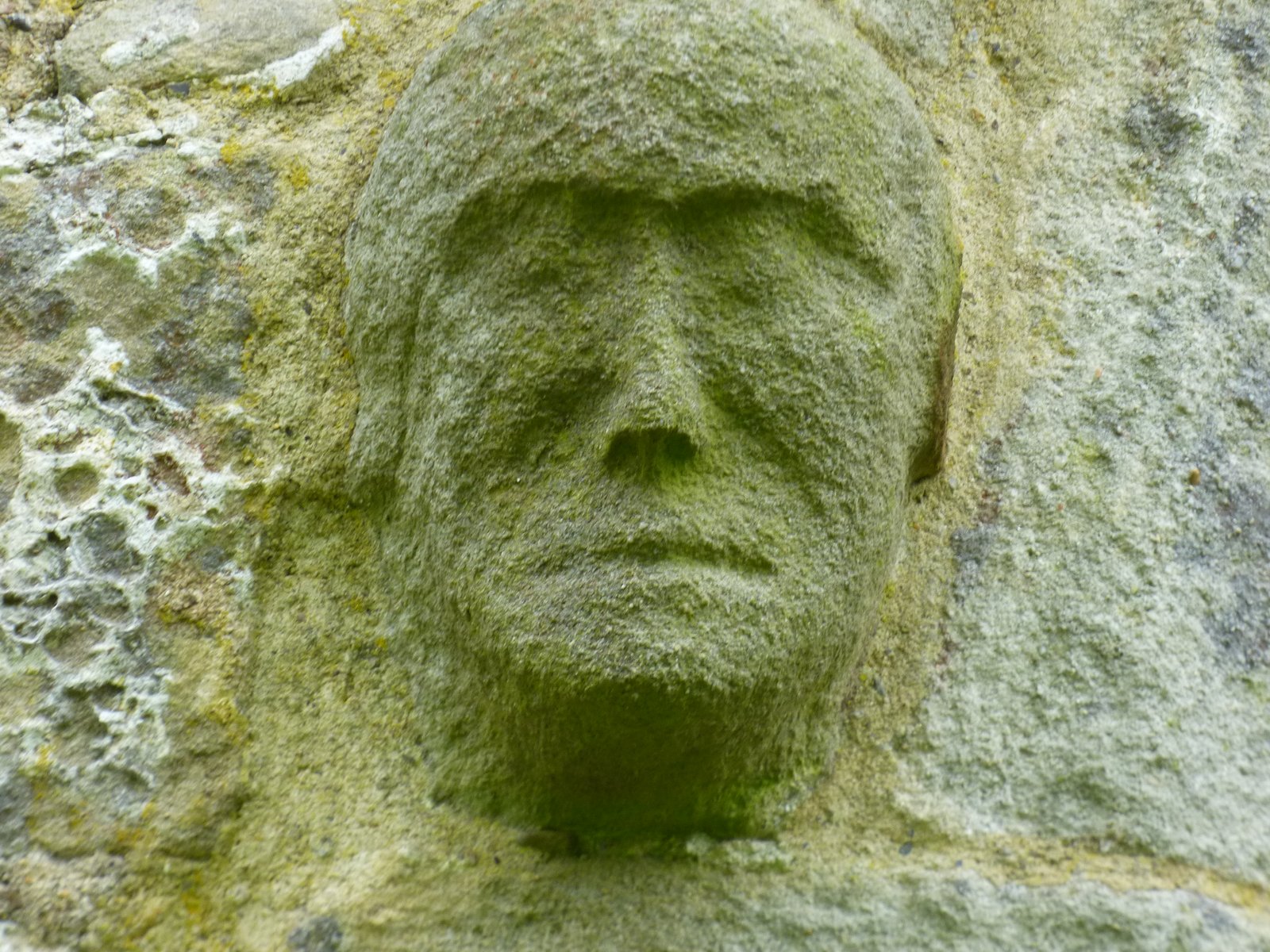← The Yorkshire Dales
Kilgram Bridge Ford
Kilgram bridge itself is of known ancient construction, and is believed to date from the early 12th century - probably Read more
Global Heritage
This is our master collection page for all of our heritage articles and sites. It is the root of our Read more
Marrick Priory
Marrick Priory, a historic gem nestled in the Yorkshire Dales, has a rich history that dates back to the 12th Read more
Ellerton Abbey
Ellerton Abbey, nestled in the picturesque landscape of North Yorkshire, holds a rich tapestry of history that intertwines with the Read more

The history of St Michael & All Angels in Downholme is woven through the centuries.

Dating back to 1180, this church has stood as a spiritual beacon in the heart of Swaledale.

Originally at the village's centre, the church witnessed the village's relocation a mile away due to the plague.

The church itself is a testament to the architectural evolution over time, with its Norman south doorway and the 14th-century east window featuring trefoiled ogee lights with reticulated tracery.

It is a Grade II listed building, indicating its national importance and historical interest.

The church's solitude, standing some distance from the current village, adds to its serene charm and echoes the tumultuous history that led to its isolation.

The Domesday Book of 1086 refers to Downholme as 'Dune,' a name derived from the Anglo-Saxon word for hill, 'dun,' with 'holme' being added later, signifying holly.


This church is not just a structure of stone and glass but a chronicle of the community's endurance and faith through times of prosperity and adversity.

It has been rebuilt and restored, yet it retains its original essence, a place of worship and peace amidst the rolling hills of Yorkshire.

The church's history is intertwined with the local nobility, including the Hutton family, whose arms are displayed within, and it has connections to the influential Scrope family of Bolton Castle.



The presence of a Saxon stone coffin and a 14th-century gravestone in the porch speaks to the site's long-standing sacred use, predating even the current building.

St Michael & All Angels stands as a silent witness to the passage of time, its walls echoing the prayers of generations and its graveyard bearing the names of those who once called Downholme home.






It is a place where history is palpable, and the whispers of the past can be heard in the quiet moments of reflection it still offers to visitors today.

Other Notes
The church itself dates from 1180, suggesting a Norman origin, and it has seen several periods of development since then. The 14th-century east window, with its intricate tracery, is a highlight of the church's architecture, indicative of the care and attention given to ecclesiastical buildings of that era. The south doorway remains from the original Norman construction, connecting the present with the past in a tangible way. Throughout the centuries, St Michael & All Angels has been a focal point for the community, even as the village itself moved to escape the ravages of the plague. The church's stone exterior belies a simple Dales chapel, hinting at a more complex history and significance. Inside, one can find a 14th-century gravestone incorporated into the 18th-century porch and a Saxon stone coffin near the chancel door, each telling stories of the people who have passed through its doors. The large hatchments on the north wall depict the arms of the Hutton family, linking the church to the wider history of the region and the influential families who have shaped it. It has been rebuilt and restored over the centuries, with each alteration adding layers to its story. The George III coat of arms, signed by Richmond artist Robert Coatsworth, is another piece of the historical puzzle that makes up St Michael & All Angels. The church's isolated position, some distance from the current village, adds to its mystique and offers a serene environment that has been described as a 'thin place' – a space where the spiritual feels particularly close to the earthly.
 The history of St Michael & All Angels in Downholme is woven through the centuries.
The history of St Michael & All Angels in Downholme is woven through the centuries.  Dating back to 1180, this church has stood as a spiritual beacon in the heart of Swaledale.
Dating back to 1180, this church has stood as a spiritual beacon in the heart of Swaledale.  Originally at the village's centre, the church witnessed the village's relocation a mile away due to the plague.
Originally at the village's centre, the church witnessed the village's relocation a mile away due to the plague.  The church itself is a testament to the architectural evolution over time, with its Norman south doorway and the 14th-century east window featuring trefoiled ogee lights with reticulated tracery.
The church itself is a testament to the architectural evolution over time, with its Norman south doorway and the 14th-century east window featuring trefoiled ogee lights with reticulated tracery.  It is a Grade II listed building, indicating its national importance and historical interest.
It is a Grade II listed building, indicating its national importance and historical interest.  The church's solitude, standing some distance from the current village, adds to its serene charm and echoes the tumultuous history that led to its isolation.
The church's solitude, standing some distance from the current village, adds to its serene charm and echoes the tumultuous history that led to its isolation.  The Domesday Book of 1086 refers to Downholme as 'Dune,' a name derived from the Anglo-Saxon word for hill, 'dun,' with 'holme' being added later, signifying holly.
The Domesday Book of 1086 refers to Downholme as 'Dune,' a name derived from the Anglo-Saxon word for hill, 'dun,' with 'holme' being added later, signifying holly. 
 This church is not just a structure of stone and glass but a chronicle of the community's endurance and faith through times of prosperity and adversity.
This church is not just a structure of stone and glass but a chronicle of the community's endurance and faith through times of prosperity and adversity.  It has been rebuilt and restored, yet it retains its original essence, a place of worship and peace amidst the rolling hills of Yorkshire.
It has been rebuilt and restored, yet it retains its original essence, a place of worship and peace amidst the rolling hills of Yorkshire.  The church's history is intertwined with the local nobility, including the Hutton family, whose arms are displayed within, and it has connections to the influential Scrope family of Bolton Castle.
The church's history is intertwined with the local nobility, including the Hutton family, whose arms are displayed within, and it has connections to the influential Scrope family of Bolton Castle. 

 The presence of a Saxon stone coffin and a 14th-century gravestone in the porch speaks to the site's long-standing sacred use, predating even the current building.
The presence of a Saxon stone coffin and a 14th-century gravestone in the porch speaks to the site's long-standing sacred use, predating even the current building.  St Michael & All Angels stands as a silent witness to the passage of time, its walls echoing the prayers of generations and its graveyard bearing the names of those who once called Downholme home.
St Michael & All Angels stands as a silent witness to the passage of time, its walls echoing the prayers of generations and its graveyard bearing the names of those who once called Downholme home. 




 It is a place where history is palpable, and the whispers of the past can be heard in the quiet moments of reflection it still offers to visitors today.
It is a place where history is palpable, and the whispers of the past can be heard in the quiet moments of reflection it still offers to visitors today. 




























